You’ll have heard the story, I’m quite certain. In short, this simple tale features three stonemasons, each doing the tedious, back-breaking job of carving rocks. The first one is cutting rocks because he needs the money. The second is doing the job because he perceives himself to be the best stone-cutter around. The third is hammering away with zeal and, when asked what he is doing, answers with ‘I am building a cathedral.’
This ‘Parable of the Three Stonecutters’, made famous by Peter F Drucker in his 1954 book, ‘The Practice of Management’, remains one of the most powerful illustrations of the challenges faced by Leaders today: how do you create the environment within which your stonemasons are motivated to reach beyond the task in hand and connect with the broader vision?
At that time, Drucker argued that the first stone-cutter is not an issue. He is doing an ‘honest day’s work for an honest day’s pay’ and the third stone-cutter’s merits speak for themselves. It is the second stone-cutter that the master stonemason really has to worry about because he is the person who has great technical ability but never looks beyond the task in hand. The functional work ‘becomes an end in itself’.
To keep ahead of the competition, to keep winning in a complex global world fraught with risk, the reality for today’s Master Stonemasons is that they need every single rock-cutter to be committed to building the cathedral in order to fully leverage their talent, discretionary effort and creativity.
Leaders the world over are under pressure to empower their employees, and employees the world over are under pressure to take ownership of the opportunities (and responsibilities) that come with this culture of empowerment. And changing attitudes as well as the organogram is central to success.
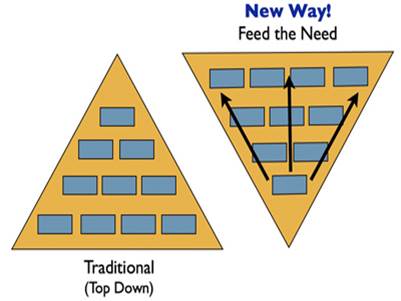
This era of change is incomfortable for many.
In the 2nd eMasterclass that we hosted for Senior Leaders in December last year, we took a moment to reflect on the discrepancy between the theoretical ‘win/win for all’ that empowerment espouses and the pragmatic reality for many.
The theory:
‘Empowerment is the idea that an organisation is most productive when all its employees are empowered to make and take decisions on their own, when authority is devolved down to all levels of the organization.’ Harvard Business Review
The reality:
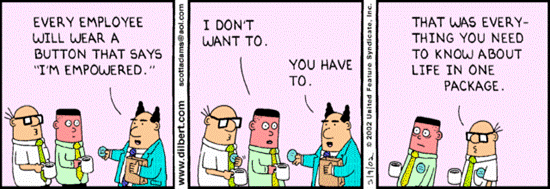
This humorous Dilbert cartoon satirises the ‘top-down’ imposition of superficial empowerment in the extreme. However, the experiences of many of those that we work with during the course of our consultancy work highlight the extent to which Leaders are perceived to be simply going through the motions. These committed employees articulate the need to see meaningful changes in the way their Leaders engage with them, support and coach them so that they feel safe enought to take up the inherent vulnerabilities associated with empowerment. For these employees, the annual employee survey can pour oil on smoldering embers and exacerbate frustrations – a point of view that we explored further in a previous article entitled ’Why dumping your employee survey could just be the key to your business’s survival.’
The simple fact is that some (but increasingly few) individuals still resist this new way of work and thwart any and every effort that is made to persuade them otherwise. Worryingly, these people are to be found right across the organisational hierarchy and all technical areas.
Data published by Gallup in 2013 uncompromisingly show that organisations still have a long way to go to get the level of engagement necessary to ensure that empowerment delivers the bottom line value that is anticipated.
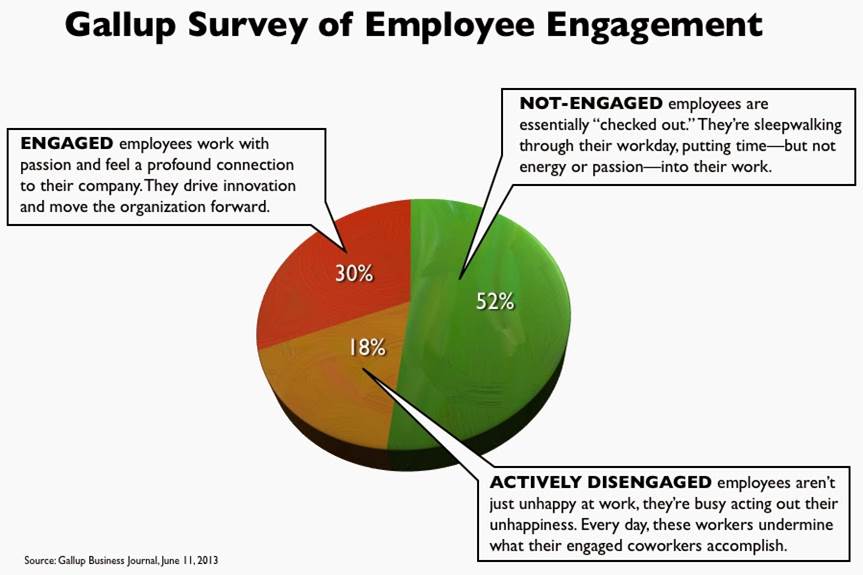
The ‘Engaged’ are associated with being the Drivers of an organisation, the ‘Not-engaged may be termed the Passengers or Plodders, and the ‘Actively Disengaged’ are widely considered to be your Saboteurs.
The simple fact is that these Saboteurs resolutely resist this new way of work and thwart any and every effort that is made to persuade them otherwise. We meet them all the time in the course of our work and, worryingly, these people are to be found right across the organisational hierarchy and all technical areas.
Yet there is one Quick Win that is available to every Leader, everywhere!
 Quick Win #1: embrace the thorns
Quick Win #1: embrace the thorns
In our experience of working with Leaders on the front-line of the LifeSciences industry, it would be entirely wrong to form the view that this toxic minority hold the balance of power. Leaders are on the offensive.
The astute assessment of unhealthy behaviours by Leaders is now giving these people less scope to lurk in the shadows. They are now readily identifiable and the detrimental impact of their invidious influence on others is now better understood prompting Leaders to act – however prickly the thorns.
As we explored Quick Wins around how to engage empowered teams, the significance of how a Leader embraces and tackles the 2/3rds of underperforming individuals within their team became clear. Actively seeking out and addressing the issues inhibiting their engagement not only reassures the rest of the team but creates a unique opportunity to gain insight what that specific person’s core values are. This deeper understanding can help a Leader to find a fresh approach that either motivates a change of attitude or expedites a change of scene.
Management of risk: a key issue for Leader and employee
Sadly however rootling out or reforming the ‘rotten apples’ in the barrel is, in itself, not the answer to engaging an empowered team.
In our December eMasterclass we examined the extent to which this is a complex issue with the management of risk being a key issue for Leader and employee alike.
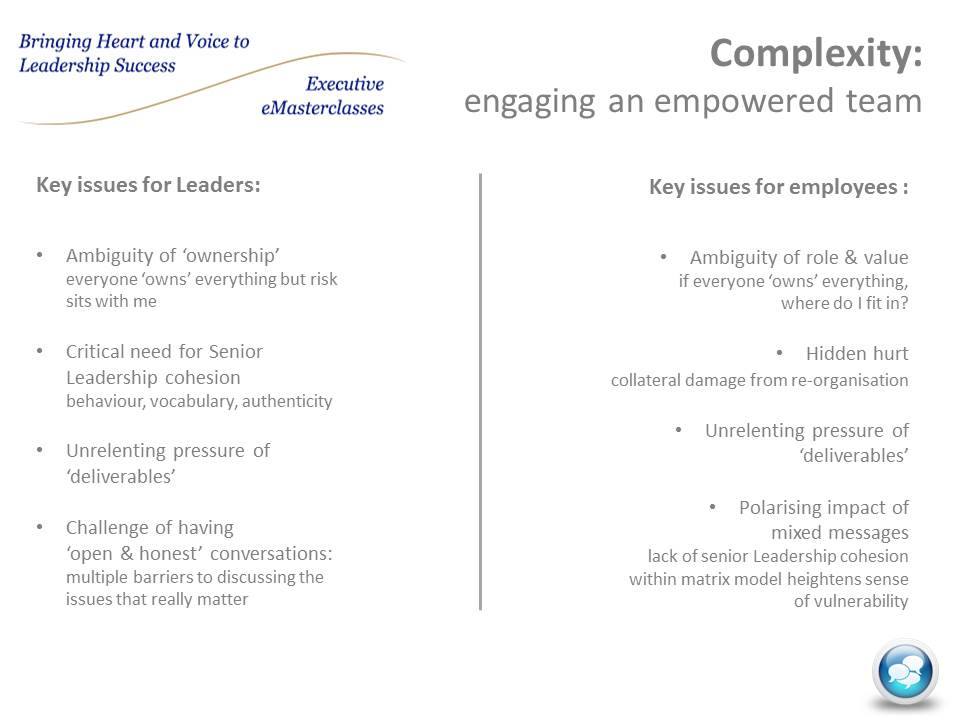
In Daniel Goleman’s book, ‘Primal Leadership: Realizing the Power of Emotional Intelligence’, Goleman states that roughly 50-70% of how employees perceive their organisation’s climate is attributable to the actions and behaviours of their Leaders. The Leaders that we work with say it goes even deeper than this: that for empowerment to work there needs to be a cultural shift in attitude towards risk.
In highly empowered models, with employees handling day-to-day operations and working collaboratively to find creative solutions to the challenges encountered along the way whilst keeping their Leaders informed and involved as necessary, the leaner-tiers of Leaders were clearly engaging more effectively in the strategic dialogue and debate necessary to drive long-range success.
However, achieving this environment requires an intricate web of finely counter-balanced elements that integrate:
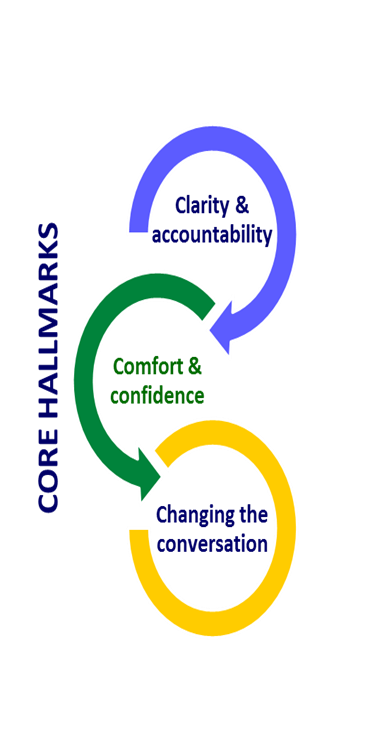
And none of the Leaders we spoke to were finding the transition easy.
you suddenly realise that you do not have to know everything in your organisation and part of that kills me but you have to evolve from being the doer to a coach.'
VP Global Pharmaceutical Company
 Quick Win #2: Keep your 6th sense on high alert
Quick Win #2: Keep your 6th sense on high alert
At the heart of it all is TRUST. Without trust the risks of empowerment are too high, the barriers to engagement too great and the Leader will never hold the personal authority of a real Leader. And, at the core of trust lies communication.
So, the 2nd Quick Win that emerged is the enormous scope that opens up for Leaders when they keep their intuition set on ‘high alert’. We explored how a Leader’s intuitive skills enable them to:
- Listen for what is not being said
- Use validation to reassure employees that they have been correctly heard
- Be consistent in the key messages that they convey through all forms of communication
- Take time to ‘walk a mile’ in their employees shoes.
Our 3rd eMasterclass will be devoted to specifically probing the little ways in which Leaders can use the ‘Mighty Power of small’ to transform the impact of their communication, be that verbal or non-verbal. We hope you can join us for that.
In the meantime, I leave you with this final reflection and hope that reading this article has helped you to think about simple, pragmatic steps that you could take right now to be the kind of effective Leader that you want to be.
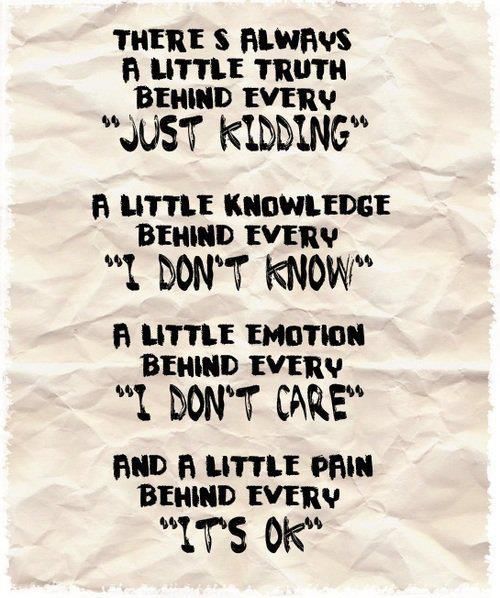
This article has been written by: Annalise Cowley, Director of Mansfield Buchanan.
An experienced Consultant and qualified Coach, Annalise works exclusively with LifeSciences clients worldwide and helps Leaders and their teams to use insight into what people need and value to deliver the business results that matter.
Sign up to our next eMasterclass
For more information on our current series of eMasterclasses, please click here:
Thurs February 5th, 2015
1300 GMT : 0800 EST : 2200 JPN
The MIGHTY power of small
Please note: This complimentary eMasterclass is a peer forum for Senior LifeSciences Leaders only and does, therefore, have restrictions associated with it. In the event that this is not the right forum for you, there are many other ways in which we can help you to be a more effective Leader. So, please do get in touch with us and we will explore alternative options with you that may serve you better.
MB Leadership is a specialist division of Mansfield Buchanan.
We enable Leaders and their teams to deliver insight-driven success within the LifeSciences sector.
Corby Enterprise Centre, Northamptonshire, NN17 5EU, UK
t: +44 (0) 1536 560358
PiR Resourcing are leaders in senior life science resourcing.
As Executive recruiters, we place top talent in senior leadership roles within the LifeSciences sector worldwide.
www.pir-resourcing.com
Compass Point Business Park, Cambridgeshire, PE27 5JL, UK
t: +44 (0) 1480 499580

.jpg)


